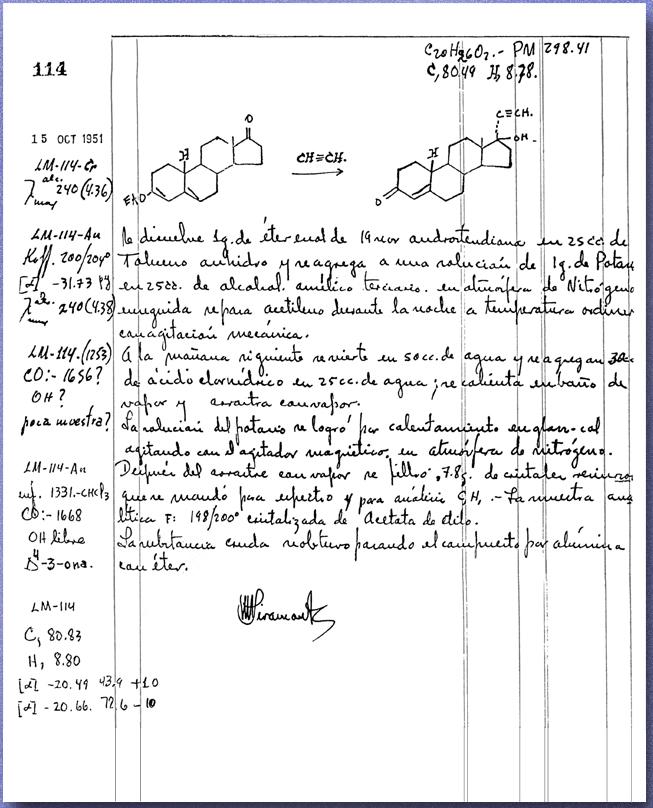Progestin

A progestin is a synthetic progestogen that has some biological activity similar to progesterone.
The two most frequent uses of progestins are for hormonal contraception (either alone or with an estrogen), and to prevent endometrial hyperplasia from unopposed estrogen in hormone replacement therapy. Progestins are also used to treat secondary amenorrhea, dysfunctional uterine bleeding and endometriosis, and as palliative treatment of endometrial cancer, renal cell carcinoma, breast cancer, and prostate cancer. High dose megestrol acetate is used to treat anorexia, cachexia and AIDS-related wasting. Progesterone (or sometimes the progestin dydrogesterone or 17α-hydroxyprogesterone caproate) is used for luteal support in IVF protocols, questionably for treatment of recurrent pregnancy loss, and for prevention of preterm birth in pregnant women with a history of at least one spontaneous preterm birth.[1]
History
The recognition of progesterone's ability to suppress ovulation during pregnancy spawned a search for a similar hormone that could bypass the problems associated with administering progesterone (low bioavailability when administered orally and local irritation and pain when continually administered parentally) and, at the same time, serve the purpose of controlling ovulation. The many synthetic hormones that resulted are known as progestins.
The first orally active progestin, ethisterone (pregneninolone, 17α-ethynyltestosterone), the 17α-ethynyl analog of testosterone, synthesized in 1938 by Hans Herloff Inhoffen, Willy Logemann, Walter Hohlweg and Arthur Serini at Schering AG in Berlin, was marketed in Germany in 1939 as Proluton C and by Schering in the U.S. in 1945 as Pranone[2][3][4][5][6]
A more potent orally active progestin, norethisterone (norethindrone, 19-nor-17α-ethynyltestosterone), the 19-nor analog of ethisterone, synthesized in 1951 by Carl Djerassi, Luis Miramontes, and George Rosenkranz at Syntex in Mexico City, was marketed by Parke-Davis in the U.S. in 1957 as Norlutin, and was used as the progestin in some of the first oral contraceptives (Ortho-Novum, Norinyl, etc.) in the early 1960s.[3][3][4][5][6][7]
Norethynodrel, an isomer of norethisterone, was synthesized in 1952 by Frank B. Colton at Searle in Skokie, Illinois and used as the progestin in Enovid, marketed in the U.S. in 1957 and approved as the first oral contraceptive in 1960.[3][4][5][6][8]
Examples
Some examples of progestins that have been used in hormonal contraceptives are norethynodrel (Enovid), norethindrone (many brand names, most notably Ortho-Novum and Ovcon) norgestimate (Ortho Tricyclen, Ortho-Cyclen), norgestrel, levonorgestrel (Alesse, Trivora-28), medroxyprogesterone (Provera, Depo-Provera) and desogestrel.
Methods of progestin-based contraception
It has been found that the most effective method of contraception was with a combination of estrogen and progestin. This can be done in a monophasic, biphasic, or in a triphasic manner. In the monophasic method, both an estrogen and a progestin are administered for 20 or 21 days and stopped for a 7 or 8 day period that includes the 5 day menstrual period. Sometimes, a 28 day regimen is used that includes 6 or 7 inert tablets. Newer biphasic and triphasic methods are now used to more closely simulate the normal menstrual cycle. Yet another method is to administer a small dose of progestin only (no estrogen) in order to decrease certain risks associated with administering estrogen, but a major side effect is irregular bleeding that is usually observed during the first 18 months of such therapy.
See Also
References
- ↑ Loose, Davis S.; Stancel, George M. (2006). "Estrogens and Progestins". In Brunton, Laurence L.; Lazo, John S.; Parker, Keith L. (eds.). Goodman & Gilman's The Pharmacological Basis of Therapeutics (11th ed. ed.). New York: McGraw-Hill. pp. pp. 1541-71. ISBN 0-07-142280-3.
- ↑ Inhoffen HH, Logemann W, Hohlweg W, Serini A (1938). "Untersuchungen in der Sexualhormon-Reihe (Investigations in the sex hormone series)". Ber Dtsch Chem Ges. 71 (5): 1024–32. Unknown parameter
|month=ignored (help) - ↑ 3.0 3.1 3.2 3.3 Maisel, Albert Q. (1965). The Hormone Quest. New York: Random House. OCLC 543168.
- ↑ 4.0 4.1 4.2 Petrow V (1970). "The contraceptive progestagens". Chem Rev. 70 (6): 713–26. PMID 4098492.
- ↑ 5.0 5.1 5.2 Sneader, Walter (2005). "Hormone analogues". Drug discovery : a history. Hoboken, NJ: John Wiley & Sons. pp. pp. 188-225. ISBN 0-471-89980-1.
- ↑ 6.0 6.1 6.2 Djerassi C (2006). "Chemical birth of the pill". Am J Obstet Gynecol. 194 (1): 290–8. PMID 16389046.
- ↑ Djerassi C, Miramontes L, Rosenkranz G, Sondheimer F (1954). "Steroids. LIV. Synthesis of 19-Nor-17α-ethynyltestosterone and 19-Nor-17α-methyltestosterone" (PDF). J Am Chem Soc. 76 (16): 4089–91.
- ↑ Colton FB (1992). "Steroids and "the pill": early steroid research at Searle". Steroids. 57 (12): 624–30. PMID 1481226.